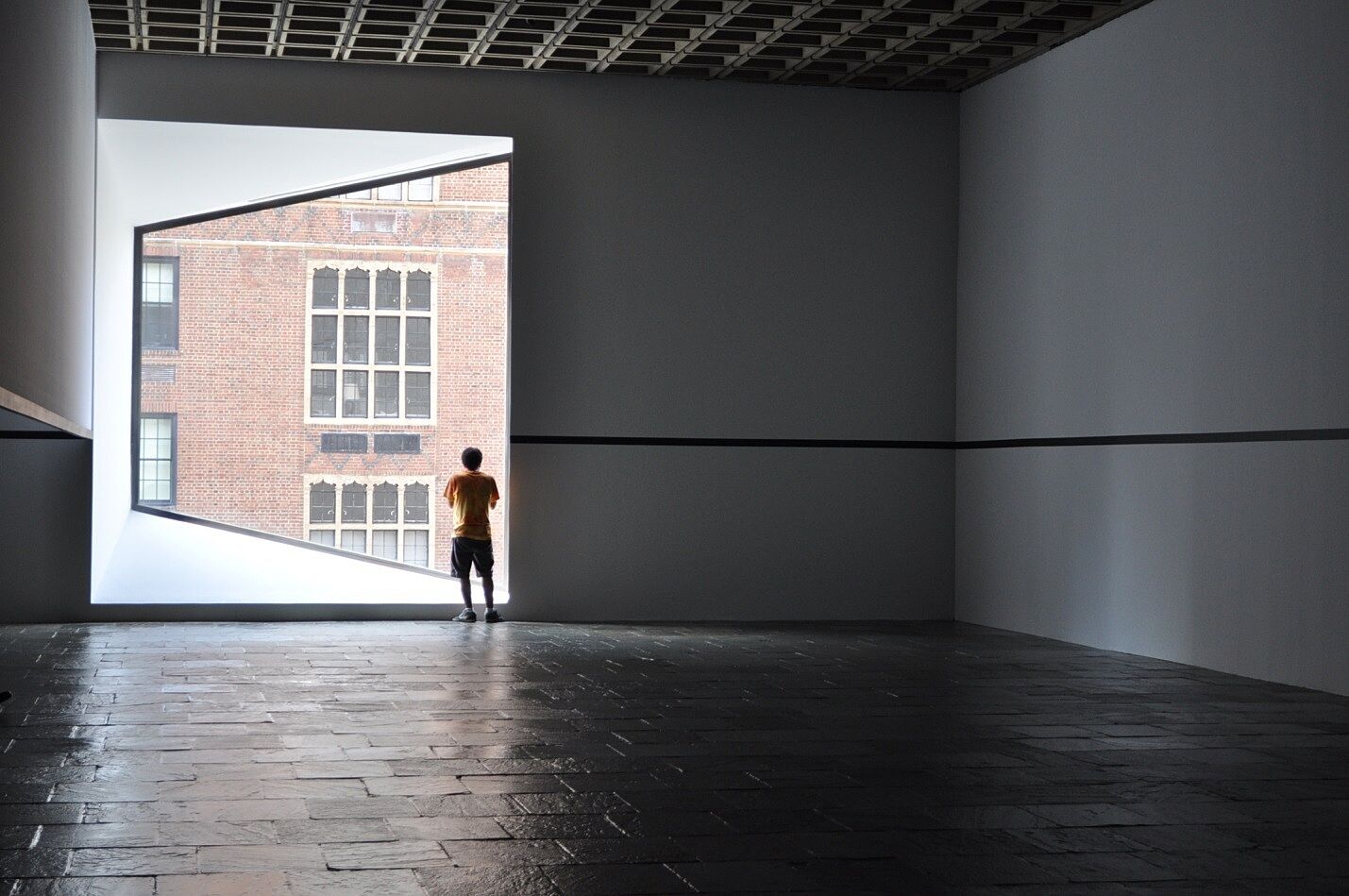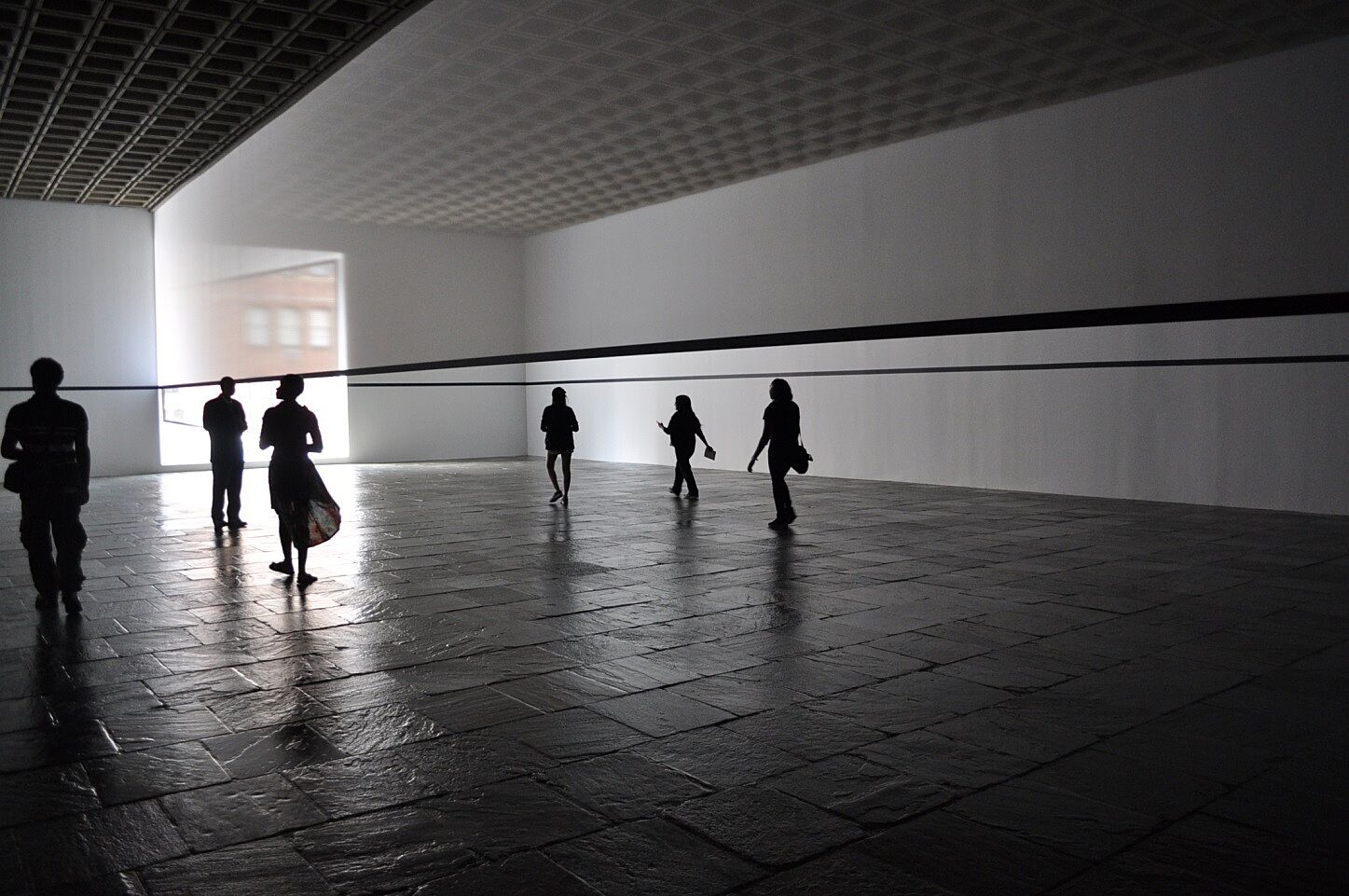YI Explores ROBERT IRWIN: SCRIM VEIL—BLACK RECTANGLE—NATURAL LIGHT, WHITNEY MUSEUM OF AMERICAN ART, NEW YORK (1977)
Jul 10, 2013
On July 10, Jane Panetta, Curatorial Project Researcher at the Whitney, talked to us about the Robert Irwin installation on view in the fourth floor galleries. She told us about how interesting it is to be able to work with a living artist and what Irwin's ideas were for this work, first installed in 1977, and recreated in 2013. Irwin’s plan was to change the gallery in order to make us see light and space in different ways. He used specific materials—scrim, metal, and wood—to alter the space. A large scrim of transparent fabric is suspended from the ceiling and bisects the length of the gallery, while a black line is painted around the gallery’s perimeter walls. The large, fourth-floor window provides the only light source, which changes according to the time of day and the weather. It looks complicated and precise, and the fact that it involves seeing things differently is interesting to us and makes us appreciate the work.
After visiting the Irwin installation, we went to the Guggenheim Museum on 89th Street and Fifth Avenue to check out light installations by artist James Turrell. I noticed that Turrell uses artificial light whereas Irwin’s work at the Whitney employs just the natural light from the gallery window. Turrell’s main installation at the Guggenheim captured many peoples’ attention. This work uses a series of interlocking cones lined with LED fixtures, installed in the Museum’s ceiling, which changed colors and addressed how you see people and space in different lighting. The fact that this light installation included both natural daylight and LED light was pretty cool. When you're in that space watching the light change colors, you can get lost and stare at its beauty for a long time.
By Daniela and Meli, Youth Insights Summer participants


